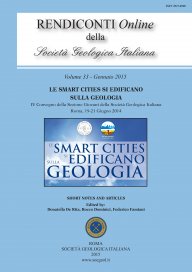
Volcanism in the city of Naples
Claudio Scarpati (*), Annamaria Perrotta (*) & Domenico Sparice (*)
(*) Dipartimento di Scienze della Terra, dell'Ambiente e delle Risorse, Università di Napoli "Federico II", Largo S. Marcellino 10, Napoli. E-mail: claudio.scarpati@unina.it
Volume: 33/2015
Pages: 88-91
Abstract
A twenty years lasting geo-volcanological survey allowed us to reconstruct the eruptive history of the city of Naples which is part of the active Campi Flegrei (Phlegraean Fields) volcanic field. Naples hills are mainly modelled by volcanic and volcanotectonic processes, partly masked by historical floods that buried the lower part of the city as well as the main roman buildings. The ancient core of these hills is made by coalescent tuff cones and a lava dome older than 78 ka. Remnants of this ancient activity are draped by a thick succession of pyroclastic deposits comprising large, caldera-forming ignimbrites (Campanian Ignimbrite, 39 ka and Neapolitan Yellow Tuff, 15 ka), phlegraean tephra and monogenetic vents (e.g. Trentaremi and Nisida volcanoes). The western area of Naples collapsed during both the ignimbrite episodes. Caldera faults bound Camaldoli hill, San Martino hill, Capodimonte hill and Posillipo hill. Stratigraphical and geochronological data show that the volcanic activity in the city of Naples has lasted at least 78 ka and probably longer on the basis of the undated ancient tuffs at the base of the neapolitan succession. This persistent volcanic activity indicates that this urban sector of the Campi Flegrei volcanic field, could be considered as a likely eruption location for the next event.
Keywords
Get Full Text